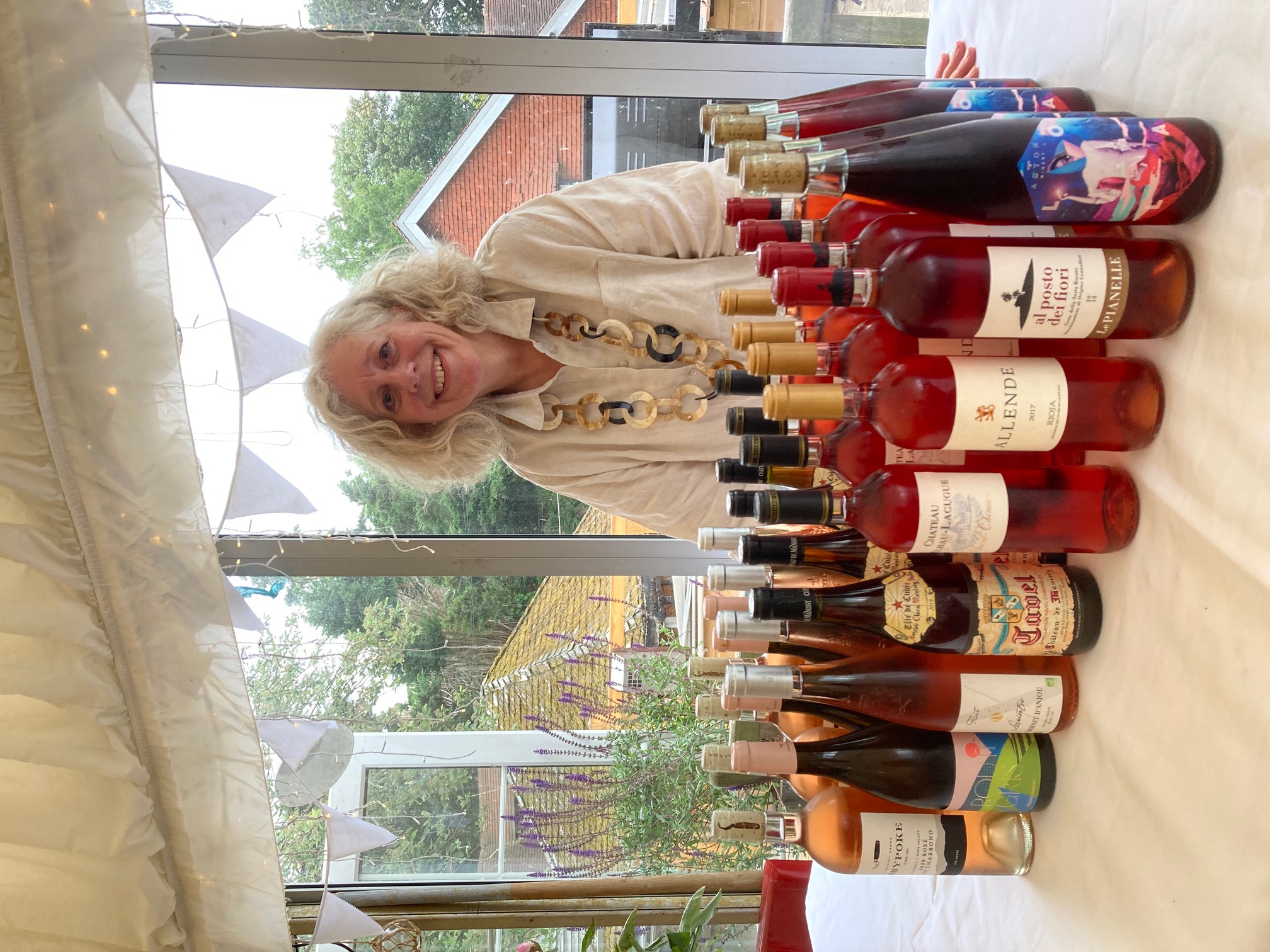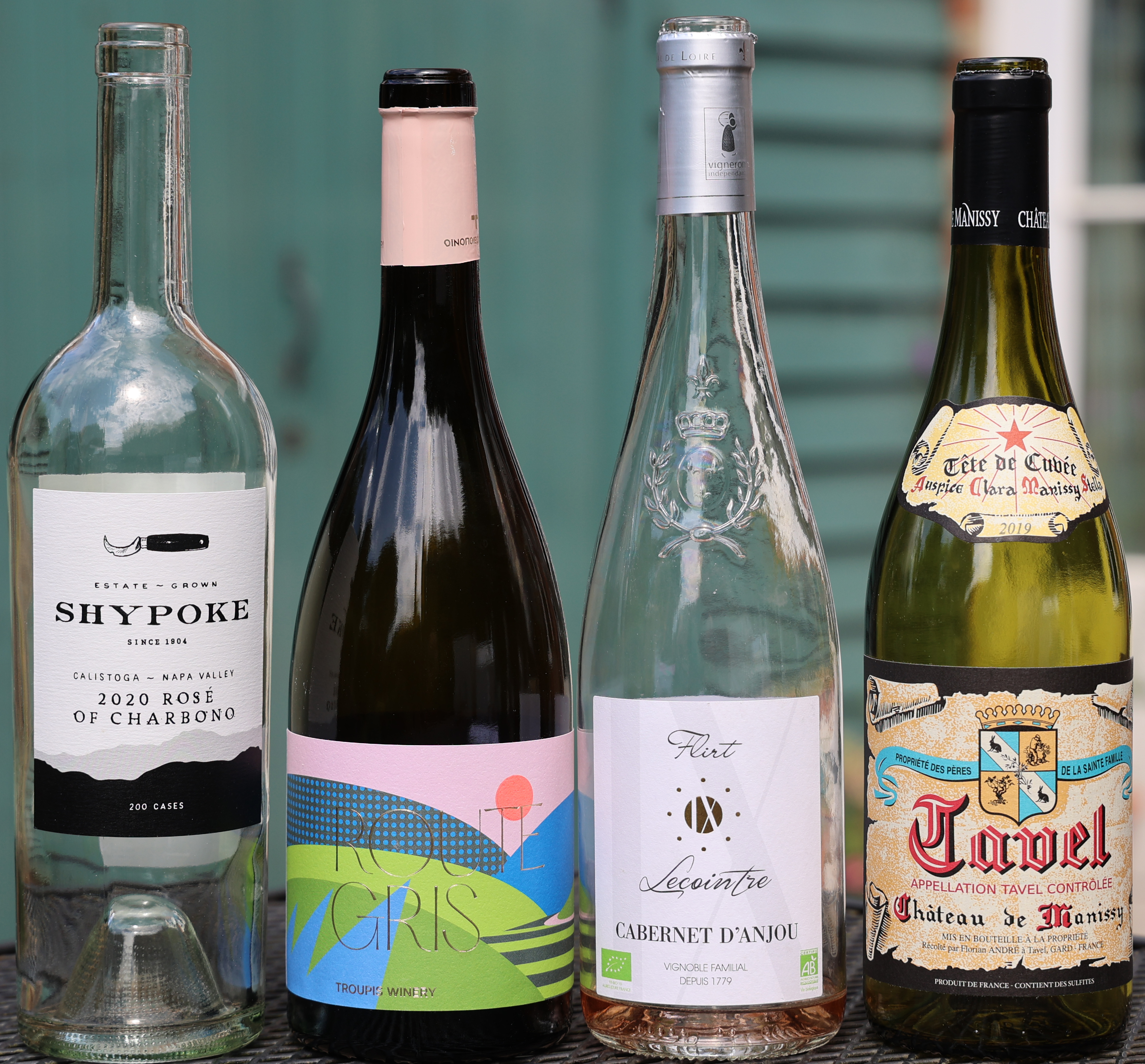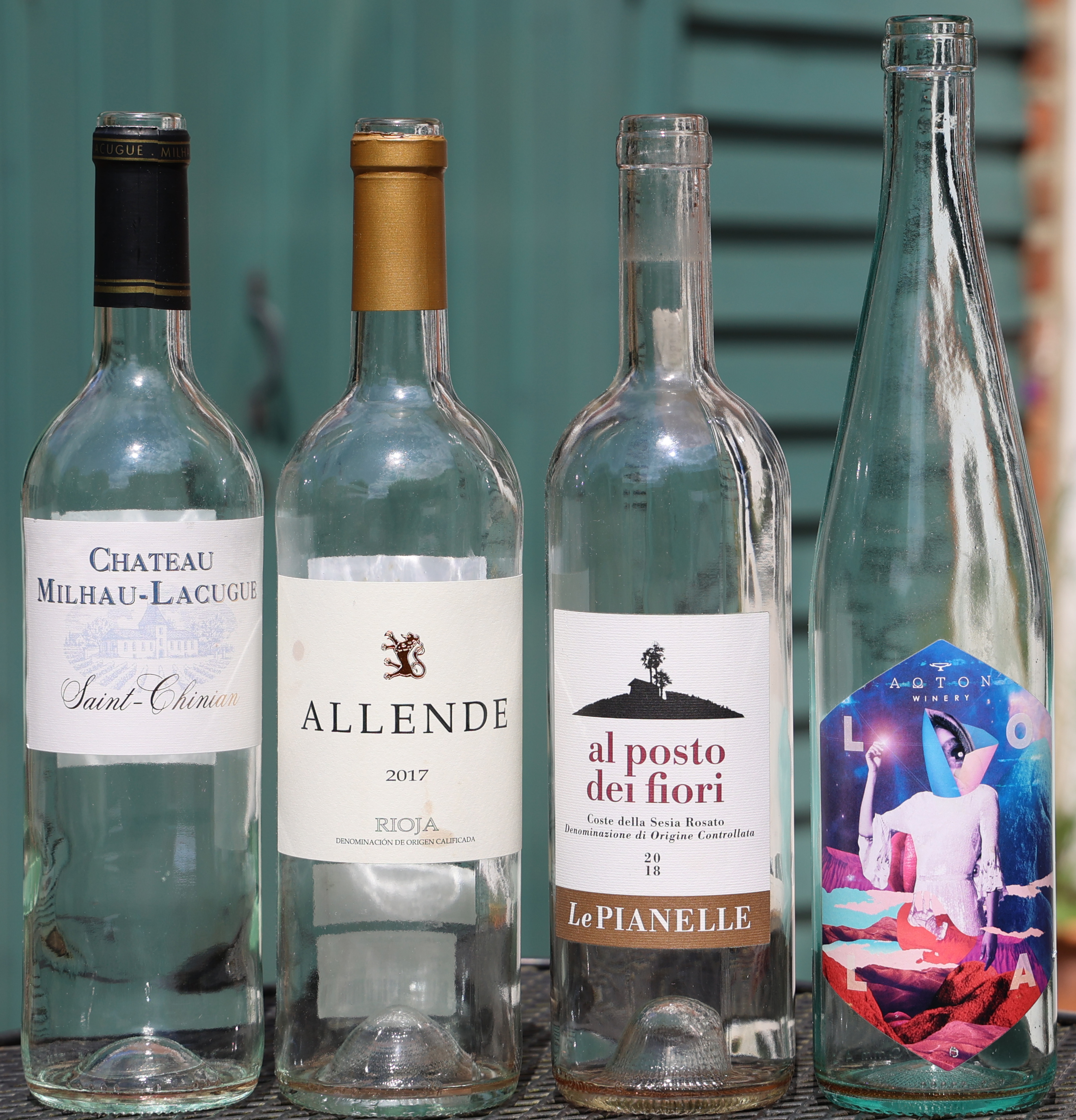 The Club members were treated to a highly entertaining and informative presentation on the world of rosé by Provence resident, rosé producer, and rosé specialist Elizabeth Gabay MW. (A return visit to the Club. She made a first presentation to us several years ago).
The Club members were treated to a highly entertaining and informative presentation on the world of rosé by Provence resident, rosé producer, and rosé specialist Elizabeth Gabay MW. (A return visit to the Club. She made a first presentation to us several years ago).
In order to entertain our tastebuds and explore our vinous appreciation skills, we were firstly presented blind with a glass of what appeared to be a slightly petillant rosé. On revealing to members that this wine was the infamous Mateus Rosé; Elizabeth went on to discuss the question of how we define rosé wine. This was to become an underlying theme of her presentation during the evening.
Remarking that as there is no legal definition to rosé wine, winemakers are free to create the wine by which ever method best suits them … and therefore their market. Noting that the market is the driving force for most producers, Elizabeth then presented us with a table of the best-selling brands of rosé in the UK. This revealed that the majority were from Provence and the top brand to be that produced in the name of Kylie Minogue! But how can one tell the difference between the wines and are some better than others? Elizabeth revealed to us that in her professional career she tasted dozens of rosé wines every day and that she did not like 90% of them, however ‘the other 10% were exciting’.
We were presented with eight wines to taste, and these were served in 3 flights. The first three wines classified as popular ‘fruity, aromatic, off-dry, easy drinking’ type rosés. The second flight was concerned with the question of ‘can rosé be serious?’ This consisted of three traditional and historic, old-fashioned style wines.
The final flight of two ‘outside the box’ rosés came with a mention of ‘Gorgeous Gabriele in Puglia!’
Flight 1
1). Shypoke, Rosé of Charbono 2020.
The estate grown, hand crafted wines are sustainably farmed on the century old family ranch, located in the northern end of the Napa Valley. The ranch is situated on a bed of alluvial soil which creates fruit of unique character and elegance. The heirloom Charbono variety, hailing from the Savoie and has been grown at the Calistoga ranch since 1904.
end of the Napa Valley. The ranch is situated on a bed of alluvial soil which creates fruit of unique character and elegance. The heirloom Charbono variety, hailing from the Savoie and has been grown at the Calistoga ranch since 1904.
See https://www.shypoke.com
This rare Napa Valley ‘fruit to bottle’ rosé…. is the result of a fruit thinning pass at 50% veraison. Whole cluster pressed and fermented at 12.7C until dryness. Nevertheless an off-dry pink wine though with some crispness.
According to one reviewer, this wine is delicate with compelling balance. Lifted fruit, while detailing restraint. Crushed rose petals and delicate strawberries on the nose, on the palate, sticky dense strawberry jus dominates, with fresh lychee fruit elements and bright savoury notes on the finish. Very satisfying and refreshing. 200 cases produced. [NB. For California, the 2020 vintage was nothing short of traumatic, with heatwaves, lightning strikes, wildfires, and the Covid pandemic!]
See https://www.winespectrum.com/wine/2020-shypoke-rose/
Charbono (Bonarda) is a widely travelled [usually red wine] grape variety with a complicated history. Originally from the alpine vineyards of Savoie in eastern France, it is now mostly planted in Napa Valley, where it is known as Charbono, and in Argentina, where it goes by the name Bonarda. Charbono was known as "Corbeau de Savoie" in its native France, and as "Douce Noire" in Savoie itself. Charbono covers 30 hectares of land in the Golden State. In the vineyard, Charbono, is usually one of the last varieties to be harvested, as it needs plenty of time on the vine to ripen fully. Even then, it is notable for its high acidity, but when yields are kept to a minimum, this can be accompanied by rich fruit complexity, structured tannins and some sweet notes of spice.
See https://en.wikipedia.org/wiki/Douce_noir
2). Troupis Route Gris Moschofilero 2021.
An gris ‘natural’ wine in the form of the intensely flavoured Moschofilero from Greece. Moschofilero is the flagship grape of this particular winery from vines at 700m altitude. It is in fact a 'gris', or grey, grape, meaning the skins are tinged slightly pink in colour. It is macerated on its skins for one week, like it has been for this wine, the result is a pretty peachy-pink hue. A little cloudy in the glass, as it's unfiltered. An explosion of heady rose petal and parma violet fragrance, for which this grape variety is known. The palate is pleasantly full and round, with flavours of mandarin, mango, Turkish delight and grapefruit. It's a very individual wine, which won't be to everyone's taste, but offers good complexity of flavour, intensity, and uniqueness.
See https://www.decanter.com/wine-reviews/greece/peloponnese/troupis-route-gris-moschofilero-arkadia-peloponnese-2021-62506
Moschofilero is a pink-skinned, aromatic grape variety grown mainly on Greece's Peloponnese peninsula. It has been said that there is no single Moschofilero, only many mutations of the ancient "Fileri" grape family from Peloponnese. The -filero suffix lends itself to many varieties grown in the area that have a similar DNA makeup to Moschofilero.
For vineyard website, see https://www.troupiswinery.gr/en/wine/route-gris/
3). Cabernet d’Anjou: Chateau La Tomaze Rosé 2020
Made from Cabernet Franc, Cabernet Sauvignon or a blend of the two. This Cabernet d'Anjou, demi-sec [10 grammes residual sugar] rosé wine is salmon-pink in colour, with fresh, inviting, wild strawberry, crushed-raspberry aromas, the merest hint of pepper, and a juicy palate for carefree summer drinking. A perfect aperitif on a hot summer's day, this rosé wine is also very adaptable and can be served with a varied range of dishes such as savoury-sweet or spicy exotic food, (Indian, Thai or Chinese cooking), quiches, or a melon topped with berries. Serve at 6 - 8 degrees C. Certified organic. Will keep up to 5 years.
See https://www.yapp.co.uk/cabernet-d-anjou-chateau-la-tomaze-rose-2020
Cabernet d'Anjou is the appellation specifically reserved for rosé Anjou wines made from the 'Cabernet' grapes – a combination of Cabernet Sauvignon and Cabernet Franc. The wines are frequently off dry or even semi sweet. However balanced acidity and good tannic structure make them not only more ageworthy, but currently more commercial than their Rosé d'Anjou counterparts. A Cabernet d'Anjou wine can originate from any one (or several) of the district's 150 communes, stretching from Saumur in the east to Champtoceaux in the west. This area lies on the dividing line between the carboniferous soils of the Armorican Massif and the whiter, limestone rich soils of the southern Paris Basin.
Vineyard website [French only], http://www.tomaze.com
Flight 2
4). Château de Manissy, Tavel Rosé Tet de Cuvée
The 17th century Château de Manissy is in the Southern Rhône Valley. Once the property of the Lafarge family they donated it to the local church. The Holy family’s missionaries acquired the castle at the beginning of the 20th century and began growing their own vines to produce their first Cuvée of Tavel wine. The same wine making technique from 1915 is still currently used. In 2003, winemaker Florian André took over management of the vineyards. The Tête de Cuvée is a biodynamic barrel aged dry rosé. Made from hand-harvested, Cinsault, Clairette and Grenache Blanc grapes grown on galets roulés [the Rhône Valley’s classic rounded pudding-stones] over sand and blue clay soils. The grapes are destemmed, crushed, and cold-soaked for 24-48 hours before pressing, alcoholic fermentation is initiated by native yeasts and continues at low temperatures (16-18°C) for around 15 days with malolactic fermentation depending on vintage. The wine is then aged in 225-litre oak barrels for 12 months and has excellent aging potential.
A pinkish colour, with bold, copper highlights. A rich, complex style of rosé with aromas of ripe quince, dried orange and hints of almond and exotic spice; full bodied yet dry and elegant with a long, satisfying finish. Comes into its own when paired with food, matching particularly well with North African spiced grills and tagines. Serve between 10° - 12°.
See https://www.amathusdrinks.com/b2c/chateau-de-manissy-tavel-rose
Vineyard website, https://www.chateau-de-manissy.com/le-domaine/?lang=en
 5). Saint-Chinian: Château Milhau-Lacugue Rosé 2020
5). Saint-Chinian: Château Milhau-Lacugue Rosé 2020
A scarlet-hued oaked rosé in complete contrast to the translucent Provençal pinks. Winemaker Jean Lacugue makes this ruby-red rosé à l’ancienne' ('in the traditional style') using the saignée method - producing the opposite of a light-salmon vin clair. This is a blend of Grenache Noir, Cinsault and Mourvèdre grapes grown on limestone-clay soils. It has fresh, dry, vibrant red berry fruit flavours and aromas. A versatile and excellent food wine that can be appreciated in both summer and winter. Can be drunk up to 5+ years after vintage.
See https://www.yapp.co.uk/saint-chinian-chateau-milhau-lacugue-rose-2020
Saignée means ‘to bleed,’ and describes a method of rosé winemaking that involves ‘bleeding’ off, after a short period of time, a portion of red wine juice after it has been in contact with the skins and seeds. This separated juice then finishes fermenting on its own to produce a bolder and darker colour rosé wine.
6). Rioja Rosado, Finca Allende 2017
A wine that breaks myths …
A blend of 60% Tempranillo and 40% Garnacha grapes, sourced from the Acquineta vineyards that are over 30 years old. The grapes are handpicked, pressed in a vertical press, fermented in stainless steel tanks at 18C, then aged for approximately 30 months in French oak Bordeaux barrels that are racked every four months. Finally, the wine is bottled without being filtered.
The result is a rich, complex dry wine with a bright salmon-pink in colour. Notes of strawberries, raspberries, cherries, and a hint of citrus on the nose. The palate reveals a vibrant acidity and minerality, balanced with a subtle sweetness and a refreshing finish. Perfect pairing with vegetables, pasta, salads, pizzas, spicy dishes, rice dishes, grilled fish, and seafood. Best served at 9C. Has extraordinary bottle aging potential.
Finca Allende, established in 1986 by Miguel Ángel de Gregorio, is housed in a historic manor from the 17th century situated in the mediaeval town of Briones on the right bank of the Ebro River, in the centre of Rioja Alta. The high altitude vineyards are situated on hills that face north, northeast, and northwest composed of red clay and gravel. They are thus exposed to various continental, Mediterranean, and Atlantic influences. The vines are grown without using any form of herbicide or artificial pesticides and are protected and cared for using traditional manual methods, including the use of draught animals.
Vineyard website, http://www.finca-allende.com/en/
Flight 3
7). Alto Piemonte, Al Posto dei Fiori, Le Pianelle Rosato 2018
‘A rosé in the family style of Barolo.’
From the northern Piedmont, Al Posto dei Fiori (Instead of flowers) is a rich full bodied, yet refreshing dry, organic rosé.
A blend of 90% Nebbiolo, 5% Vespolina and 5% Croatina grapes from at least 20-year-old vines. The Nebbiolo had a cold maceration period for about 48 hours with the temperature controlled using dry ice. The rest of the wine is a saignée of Croatina and Vespolina from the red wine production. Cold fermentation followed in stainless steel tanks for about 22 days. Winemaker Cristiano Garella ferments 10% of the wine in used Slavonian barriques. The wine is then bottled in March following the harvest.
The bouquet is dominated by aromas of red fruits, liquorice. Then big, rich, dense and spicy with slightly sweet flavors of pomegranate and watermelon. Wild strawberry, lychee sour cherry and fresh orange peel flavours are also present. There is an overarching minerality to the nose. Finishes very juicy and long. Al Posto dei Fiori will age well for 5 years or more and is excellent with food such as salmon, shrimp, roast chicken and pasta.
Vineyard website, https://www.lepianelle.com/en/
8). Aoton Lola Retsina Rosé 2018
‘If men drink retsina and women drink rosé, if you mix the two then everyone will drink it’.
Made from a blend of 74% Mandilaria, and 26% Cabernet Sauvignon grapes, this organic dry rosé hails from central Greece and the Retsina of Peania PGI. The 1.1-hectare vineyard is made up of mostly slightly alkaline clayey sand.
The grapes are hand-picked at night then quickly destemmed and basket pressed. Wild yeasts are used in the fermentation during which a small quantity of pure resin from the pine-forest of Kouvara is added. This is dissolved during the vinification leaving behind subtle resinous undertones. The wine remains in tanks for 8 months on its fine lees with periodic batonnage.
Dark pomegranate in colour.
A complex nose with aromas and taste of fresh and dried strawberries, raspberries, mastic resin, pine nuts and hints of mahlab spice and rosemary. On the palate, flavours of melon and strawberries float over the botanical base notes.
The wine is perfect with, sardines, grilled salmon, baked grouper, spicy sausages, grilled mushrooms with garlic and coriander, pork tigania and any olive-oil based dish.
Technical details, https://aoton.gr/wp-content/uploads/2021/02/LoLa-2018.pdf
Vineyard website, https://aoton.gr
Chris Blakey 20/06/23